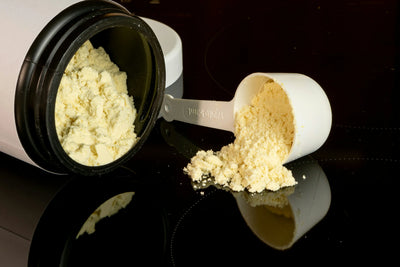Introduction
In the process of keeping a dog, if the pet owner does not pay attention to the dog's ear hygiene and does not help the dog to clean the ears for a long time, the dog may suffer from ear mites. Therefore, if the dog's ear mites are not serious, the pet owner can treat them at home by themselves, without necessarily going to the hospital.
What Do Ear Mites Look Like in Dogs?
Have you noticed that your dog has been shaking his head or scratching his ears with his paws lately? If you take a closer look and find something dirty and dark in your dog's ears, you should be careful - it could be ear mites. So what are ear mites? What traces will they leave in the dog's ears? Don't worry, the following will take you to find out.
Ear mites are a very tiny parasite, how small is it? They are almost invisible to the naked eye, and you have to use a microscope to catch them. These little guys are not big, but the destructive power is not small. They like to live in the dog's ear canal, breeding up fast, once the number of more, it will bring a lot of trouble to the dog.

When ear mites are having a big party in your dog's ear canal, you'll notice something special start to appear in your dog's ears - a dark-colored discharge. This discharge is usually dark brown or reddish-brown in color and looks a bit like coffee grounds or wet dirt. Don't look at it like it's nothing, but this is not just any earwax, it's evidence left behind by ear mites. Specifically, this discharge is a mixture of ear mite feces, dead ear mite carcasses, and the original earwax in your dog's ear canal. Doesn't that sound gross? But this is the reality of ear mites.
These dark brown discharges don't just make your dog's ears look dirty, but more importantly, they can make your dog feel very uncomfortable. You may notice that your dog starts shaking his head frequently or scratching his ears hard with his paws, as if he is protesting something. If left unchecked, these discharges can lead to bigger problems, such as ear infections, which can be even more troublesome to treat. So, if you see these coffee grounds, don't just think it's dirty, but take action.
If your dog has this kind of dark-colored discharge in his ears, don't hesitate to take him to the vet for a checkup. A professional will use a microscope to see if it's ear mites that are causing the mess, and along the way, give your dog a prescription for cleaning. After all, your dog's health is more important than anything else, right?
Ways to Determine If Your Dog Has Ear Mites
Having a dog is always full of surprises, but sometimes, those surprises can turn into little nuisances. For example, have you noticed that your fur child is always shaking his head or scratching his ears with his paws? Don't worry, it could be ear mites. Ear mites are small parasites that love to burrow into your dog's ears, and although they're so small that they're almost invisible to the naked eye, they can cause a lot of trouble. Fortunately, with careful observation, we can identify these “invisible troublemakers” from the dog's traces. Below, I will take you step by step to learn how to determine whether your dog has been hit by ear mites, and talk about what to do.
Dogs can't talk, but their small movements can't hide what's on their mind. If your dog has recently become like a bobblehead doll, frequently shaking his head, flopping his ears, or scratching his ears with his paws so much that he can't stop scratching, it's time to pay attention. These protesting behaviors are often the result of ear mites moving around in the ear canal. The little guys crawling around in the ears can be too itchy for your dog to handle, so they save themselves by shaking their heads and scratching. So the next time you see your dog performing these little tricks, don't just think it's cute, you might want to keep an eye out and check it out.
The most direct way to find out if ear mites have set up camp is to turn over your dog's ears and take a look. Gently lift his ears and take a closer look at what's going on inside the ear canal. If the ear looks red and swollen, and there's some dark brown or reddish-brown dirt in the ear canal, be wary. These discharges aren't just any earwax, they're incriminating evidence of ear mites - their feces, their dead little bodies, plus the cellular debris that falls out of the inflamed ear, mixed together to make this appearance. Sometimes you can also smell a strange odor, like something that's been fermenting for too long. If you see these signs in your ears, it's a good bet that ear mites have taken up residence.
Can't be sure just by looking at your ears? No problem, we can use a small trick to catch the current. Find a clean cotton swab, gently into the dog's ear canal (the action should be gentle, do not be too deep Oh, so as not to hurt it), wipe out a little inside the secretion, and then wipe these trophies on a white paper towel. Next, look closely - if you see white dots moving around on the paper towel, it's ear mites in all likelihood. Ear mites may be as small as a sesame seed, but their slow crawl against a white background is quite noticeable. This method is simple and intuitive, especially suitable for pooper scoopers who want to confirm with their own eyes.

Ear mites can also put your dog's ears on strike if they get too aggressive. Have you ever felt like he's been slow to respond when his name is called lately? Or become indifferent to a sound that usually jumps up at the slightest sound? Try standing behind your dog and clapping your hands, or take out your favorite toy and shake it to see if it turns its head as excitedly as it usually does. If your dog's ears are playing deaf to sound, it could be that an ear mite infection has affected his hearing. Itchy, clogged, or even inflamed ears can compromise your dog's sense of hearing, so this is not a change to be ignored.
With uncomfortable ears, your dog's mood isn't much better. Imagine being tormented by itching all day long and not even being able to sleep well, who can be happy? If your dog not only has ear problems, but also becomes irritable, has no appetite for food, and even tosses and turns at night, then you have to wonder about the destructive power of ear mites. These systemic symptoms, coupled with abnormal ear behavior, can basically convict an ear mite. After all, the dog's ears and body are connected, one place suffers, often drag down the overall state.
If you have more than one furry child at home, the contagiousness of ear mites can be guarded against. Ear mites love to hang around, and when one dog is affected, other pets can easily be infected. Especially for those little ones who like to play and sleep crowded together, ear mites are like finding a free bus. Therefore, once you find a dog at home suspected of ear mites, don't just focus on dealing with it, it's best to turn out the ears of other small friends to check once. Early detection and treatment can prevent ear mites from making a big mess at home.
Then again, red, swollen ears and strange odors aren't necessarily exclusive to ear mites. Some ear diseases, such as fungal infections or bacterial infections, have symptoms similar to those of ear mites, making it easy for people to be confused. If you still can't tell the difference after trying the above tricks, or if your dog's condition is getting worse, don't hesitate to take him to a veterinarian at a pet hospital. Doctors can use otoscope or microscope to check the ear, and even from the secretion to find out the real culprit, so as to confirm whether the ear mites, and by the way to prescribe a reliable treatment program. After all, your dog's health is not something to be guessed at.
Home Remedies for Ear Mites in Dogs
Finding out that your dog has ear mites in his ears can be a headache for many pooper scoopers. But don't worry, as long as the situation is not too serious, we can totally help our dogs relieve the trouble at home with some simple methods. Of course, if the ear mites are a serious problem, or if they don't get better after trying home remedies, then don't hesitate to take your dog to the vet. Today, I'm going to talk to you about how to help our fur kids get rid of ear mites in a natural and practical way.
Step 1: Isolate and Sterilize
Ear mites are not weakly contagious. If there are other pets in the house, the first thing you should do is to isolate the sick dog and don't let them play together, or the ear mites may spread like the plague. While quarantining, don't forget to do a thorough cleaning of your dog's living quarters. Kennels, toys, blankets, and anything else that your dog touches can be scrubbed with a disinfectant solution. If the weather is nice, it's also a good idea to take these things out into the sun - sunlight is a natural antiseptic and can leave ear mites with no place to hide.
Step 2: Clean the ear canal
Cleaning the ears is the first order of business in treating ear mites, but you have to take your time with this step and not rush it. If your dog has ear hair growing in his ears, sprinkle a little bit of pet-specific ear hair powder on it before gently pulling it out with hemostats. This not only makes the ear canal more open, but also reduces the space for ear mites to hide.
Next, it's time to officially bathe the ears. Prepare a bottle of pet-specific earwash, such as Woofy's Ear Drops, and drop it into your dog's ear canal. After dropping, don't rush to let go, gently massage the root of the ear, about 15 seconds or so, so that the ear wash liquid fully dissolve the ear wax and dirt inside. Release your hand after massaging and let your dog shake his head on his own, you'll see him shaking the dirt out - don't be offended, it's a good sign! Finally, carefully wipe the outer ear canal with a cotton swab or wet cotton ball to clean out any remaining dirt. Be careful not to reach too deep with the cotton swab or you may hurt your dog's ears.
It is recommended to clean once a day for a week. After that, you can adjust it to once or twice a week according to the speed of your dog's earwax buildup to keep your ears dry and clean.
Step 3: Topical medication
Once the ears are cleaned, it's time to give your dog some medicine. Choose some ointment that can kill mites, stop itching and inhibit bacteria, such as compound mycotoxin ointment, which is quite effective when applied to the ears. If you want to use a more targeted ear mite medicine, there are also pyrethrins on the market or ear mites such as special products, not only can kill the ear mites, but also anti-inflammatory, so that the dog's ears to suffer a little less. Be gentle when applying the medicine and don't make your dog feel uncomfortable, or he may resist the next treatment.
Step 4: Deworm the Whole Body
It's not enough to just treat the ears; ear mites sometimes have nothing to do with the health of your dog's entire body. So, in addition to topical treatment, it's best to deworm your dog's entire body. Choose a reliable dewormer, such as imidacloprid moxidectin drops, and apply them to the skin on the back of your dog's neck. This medicine can not only deal with ear mites, but also prevent fleas, roundworms and other pesky parasites by the way, so that the dog's health is an extra layer of protection.

Step 5: Supplement and strengthen resistance
Have you noticed that ear mites seem to particularly love to find those dogs with weak bodies and poor resistance? So it's especially important to give your dog some nutritional supplements while you are treating it. You can feed your dog some protein-rich food, such as boiled chicken, fish or eggs, which are all “supplements” that dogs love to eat. Combined with some fresh fruits and vegetables, such as carrots, broccoli, can not only supplement the vitamins, but also make the dog's diet more balanced. If conditions allow, you can also feed some pet-specific nutritional cream or goat's milk powder to help it recover faster. As long as the dog's body is strong, ear mites are naturally less likely to make a comeback.
Step 6: Take care and be patient
Treating ear mites is not something that can be done in a day or two, so you have to be patient. First of all, your dog may find his ears itchy and can't help scratching them. In order to prevent it from scratching the ear and causing an infection, it's best to put an Elizabethan ring on it - although it may look at you with a condescending face, it's really for its own good.
Secondly, ear mites have a long life cycle of about three weeks, so treatment can't be done in three days. The daily cleaning and medication must be maintained for at least three consecutive weeks to completely eliminate the ear mites. During this period, if you find that the ears are still red, swollen, smelly, or your dog keeps shaking his head, then you need to see your veterinarian again, don't put it off.
Finally, don't take it lightly after the treatment is over. Regularly check your dog's ears, touch them to see if there are any abnormalities, and smell if there are any strange odors. By making this a habit, you will be able to detect and solve the problem early, and keep your dog's ears healthy all the time.
Dog ear mites are annoying, but as long as we are willing to put in a little effort and use the right methods, it is not so terrible. From isolation and disinfection to cleaning and medication, to nutritional supplements, every step of the way, the dog's ears will soon be clean and fresh. Watching it flopping its ears and running around happily, doesn't it make all the effort worthwhile?





